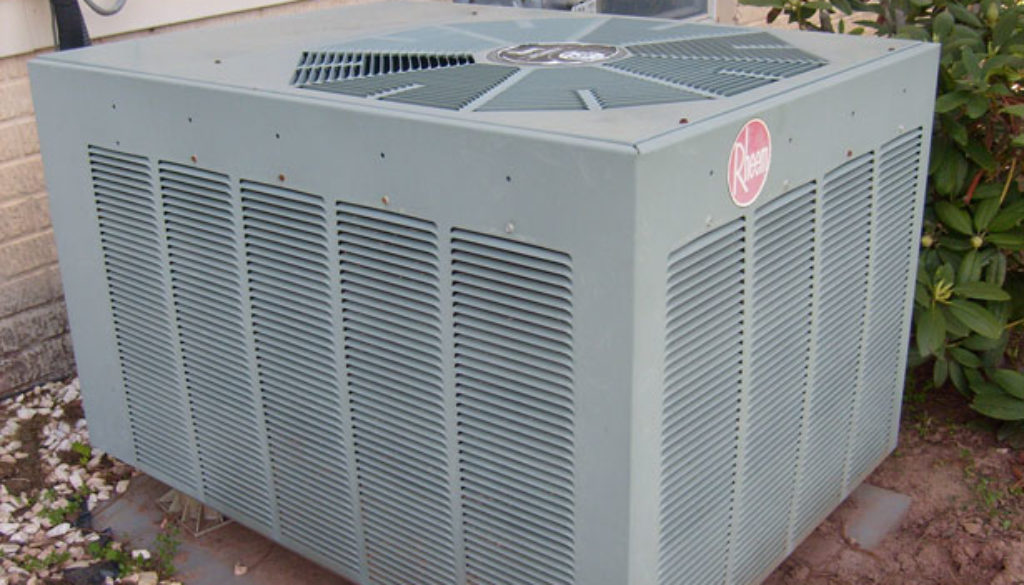Industry & Advocates Support New AC and Heat Pump Standards
By Lauren Urbanek, Natural Resources Defense Council
The U.S. Department of Energy (DOE) just issued final efficiency standards for residential central air conditioners—which cool about two-thirds of America’s homes—and heat pumps, showing once again how diverse interests can come together in often disagreeable Washington to save consumers billions of dollars while significantly reducing harmful pollution.
The new standards are the result of an agreement between manufacturers, utilities, efficiency advocates (including NRDC), state officials, DOE and others reached earlier this year after months of intense negotiations. The new standards are being released now as part of a law passed by Congress requiring a review for potential updates every six years.
The agreement builds upon the current standards for air conditioners and heat pumps established in 2011 and effective 2014, which also resulted from a consensus agreement between manufacturers, interested parties, and DOE. And the updated standard shows once again that smarter energy use is something that many varying interests can agree upon.

Big benefits for consumers and the environment
In addition to the impressive fact that the central A/C and heat pump standards came from a consensus agreement, the new standard has excellent health, environmental, and financial benefits. Over 30 years of shipments, the standards are projected to have the following impacts: cut electricity use by 340 billion kilowatt-hours over 30 years of shipments, equivalent to the power used to cool U.S. homes for more than a year and a half; save consumers $24 billion in operating costs; and keep 188 million metric tons of harmful climate-warming carbon pollution from power plants out of the atmosphere.
One other eye-popping figure: when combined with earlier standards, the new rules, which will go into effect in 2023, will deliver an efficiency improvement of 50 percent for air conditioners since national standards for air conditioners first took effect in 1992. About two thirds of U.S. households—and virtually all new residences–have central air conditioning.
The 2023 compliance date is also important because it coincides with the expected introduction of units using alternatives to the most commonly-used refrigerant for central air conditioners and heat pumps, R410A. This refrigerant and other hydrofluorocarbons — highly potent contributors to climate warming — will be phased down under the terms of the recent Kigali Amendment, a global agreement reached by parties to the Montreal Protocol to eliminate the most environmentally-harmful refrigerants. As a result, in recent months manufacturers have been provided with a clear roadmap of where their models need to be in 2023 both in terms of energy use and, potentially, low global warming-potential refrigerants, so they’ll be able to make any necessary engineering changes at the same time.
How do the new standards work?
The standards will vary among three regions—the North, Southeast and Southwest—because of their different climates. A higher efficiency level makes more sense in the south, where air conditioners run for many hours of the year, than in the north where they don’t run as often. Consumers in the Southwest will have a lifecycle cost savings (after accounting for the purchase price of the new equipment) of about $150. In the Southeast and North regions, savings will be around $40. Nationwide, consumers purchasing heat pumps will save about $131. In all scenarios, the new standards have a payback period well within the life of the equipment
Under the new rule, air conditioners and heat pumps will achieve at least 7 percent energy savings, thanks to changes to the test method and equipment rating that will increase savings beyond the change in SEER value. (SEER or Seasonal Energy Efficiency Ratio is a measure of efficiency over the course of the cooling season. The higher the SEER, the more efficient the unit.)

A bipartisan way to reduce pollution
The new residential air conditioner and heat pump standards are just the latest example of a collaborative effort between industry, electric utilities, and energy efficiency advocates. They will reduce carbon emissions by 13.3 million metric tons by 2030, and as such they are a significant step toward meeting President Obama’s goal of reducing carbon pollution by at least 3 billion metric tons by 2030 through efficiency rules for a wide range of appliances and federal buildings.
These standards follow negotiated efficiency standards approved last year for commercial rooftop air conditioners, the air conditioners commonly found on the top of big box retailers like Wal-Mart and Home Depot and warehouse all across the country, that will yield the biggest energy and pollution savings of any rule issued since DOE’s energy efficiency standards program began. A similar agreement also was reached last year on new efficiency standards for large refrigerated walk-in coolers and freezers found in almost every restaurant, supermarket, and convenience store.
The A/C and heat pumps agreement was reached at a time when consensus in Washington often seems impossible. Yet, efficiency standards—now covering more than 50 types of household appliances and commercial products in our homes, businesses, and industries—have enjoyed broad bipartisan support since President Reagan in 1987 signed legislation establishing the federal standards program. They save businesses and consumers money, spark innovation, create jobs, and reduce harmful pollution.
Now that new standards have been set, consumers will benefit from new energy-efficient air conditioners and heat pumps sold after January 1, 2023. Even if your air conditioner is only 10 years old, you may save up to 40 percent in cooling costs by replacing it with a newer, more efficient model, says DOE. Along with helping your budget, it will help clean the air, too.

